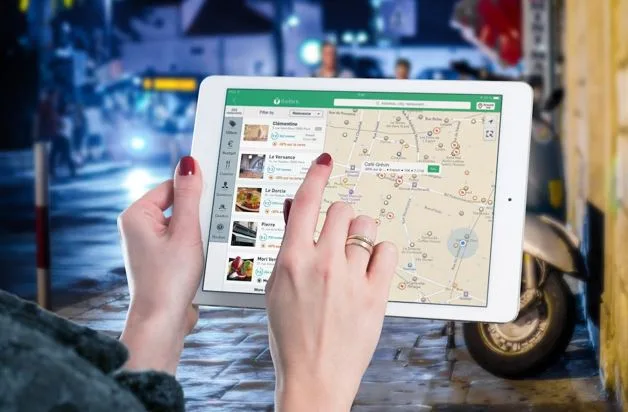Why Geolocation Matters in Modern Digital Marketing
In the ever-evolving world of digital marketing, staying ahead means embracing new tools and strategies that enhance customer engagement and drive business growth. One such powerful tool that has become indispensable is geolocation. With services like GeoTargetly, marketers can serve targeted banners, redirect users to region-specific pages, and even block unwanted traffic based on IP location. But why is geolocation so important in today’s digital marketing landscape? This article explores how it transforms strategies, improves customer targeting, and ultimately boosts return on investment.
What is Geolocation in Digital Marketing?
Geolocation refers to identifying the real-world geographic location of a device, such as a smartphone, tablet, or computer. This is typically achieved through GPS, IP addresses, Wi-Fi signals, or cell tower triangulation. In digital marketing, geolocation data allows marketers to tailor content, offers, and advertisements based on the user’s physical location.
By leveraging this data, marketers can deliver personalized and relevant messages that resonate more deeply with their audience, increasing the chances of conversion and customer loyalty.
Why Geolocation Matters
- Personalization at Its Best
Today’s consumers expect personalized experiences. They are no longer interested in generic ads that may or may not relate to them. They want content that reflects their preferences, needs, and environment. Geolocation allows marketers to customize campaigns by adjusting messaging, products, and offers to match the user’s location.
For example, a coffee chain can promote a new seasonal drink available only in certain cities or offer a discount to customers near a specific store. This kind of personalization makes marketing messages feel timely and relevant, increasing engagement.
- Improved Targeting and Segmentation
Geolocation enhances audience segmentation by adding a geographic layer to demographic and behavioral data. Instead of broad targeting, marketers can create more refined segments based on location. This allows for precise targeting whether by city, neighborhood, or even proximity to a physical store.
Such targeted campaigns help generate more qualified leads, reduce unnecessary ad spend, and improve overall campaign efficiency. A retail brand launching a new store in downtown Chicago, for instance, can specifically target people within a few miles of the location rather than reaching irrelevant audiences.
- Boosting Local SEO and Foot Traffic
Local search has grown rapidly as consumers increasingly use mobile devices to look for nearby products or services. Incorporating geolocation into marketing strategies helps businesses optimize for local search engine visibility. This includes appearing in local search results, Google Maps listings, and geographically targeted ads, which are all essential for driving foot traffic to physical locations.
For instance, a restaurant can appear as a top result when someone searches for “best pizza near me,” attracting customers who are ready to dine immediately.
- Real-Time Marketing and Timely Offers
Geolocation supports real-time marketing by allowing brands to deliver messages at the moment they are most relevant. This immediacy can make a big difference in competitive markets.
Imagine a sporting goods store sending a push notification about a flash sale on running shoes to users jogging nearby. Or a theme park offering discounted tickets to people in the vicinity on a quiet day. These timely offers use urgency and convenience to boost conversions.
- Enhanced User Experience
Providing a seamless and relevant experience is key to customer retention. Geolocation allows brands to deliver content, offers, and services that align with the user’s context, which improves satisfaction and loyalty.
For example, an e-commerce website can automatically detect a user’s country and adjust currency, language, and shipping options accordingly. This removes friction from the shopping experience and builds trust.
- Data-Driven Insights and Analytics
Geolocation data provides more than just targeting capabilities. It offers deep insights into consumer behavior based on geographic trends. Marketers can use this data to shape strategies by identifying high-potential markets, recognizing regional preferences, and optimizing distribution.
If data shows that certain products perform better in specific regions, businesses can focus inventory and marketing efforts accordingly to maximize impact.
Use Cases of Geolocation in Modern Digital Marketing
Retail and E-commerce
Retailers use geolocation to promote store openings, events, and regional discounts. For e-commerce, location data helps tailor product recommendations and improve logistics, which boosts customer satisfaction.
Hospitality and Travel
Hotels, airlines, and travel agencies use geolocation to send custom travel offers, suggest nearby attractions, or streamline booking experiences based on a user’s location.
Food and Beverage
Restaurants and cafes attract nearby customers through mobile ads, exclusive deals, or loyalty programs. Food delivery services also use real-time location data to optimize routes and reduce delivery times.
Event Marketing
Event organizers leverage geolocation to drive attendance by targeting nearby audiences or alerting users about last-minute ticket availability.
Privacy Considerations
Despite its many advantages, geolocation raises valid privacy concerns. Consumers are increasingly cautious about how their location data is used. Marketers must comply with regulations such as GDPR and CCPA, ensuring that they obtain explicit consent before collecting or using location data.
Building trust is essential. Brands should offer clear opt-in and opt-out options and take strong measures to protect data from breaches.
How to Get Started with Geolocation Marketing
- Invest in the Right Technology
Use platforms that support geolocation data collection and targeting. Many mobile apps, web tools, and ad networks include built-in geotargeting features.
- Define Clear Goals
Decide what you want to achieve, such as increasing foot traffic, boosting engagement, or improving conversions. Align your strategy with these goals.
- Create Location-Based Content
Develop ads, offers, and messaging that are relevant to specific regions and audiences.
- Test and Optimize
Use A/B testing to discover what types of geotargeted content and timing yield the best results.
- Prioritize Privacy
Stay compliant with legal regulations and communicate clearly how you handle and use location data.
Conclusion
Geolocation is no longer just an extra feature in digital marketing; it is essential. Its ability to deliver personalized, timely, and context aware experiences makes it a powerful tool for brands looking to stand out in a crowded marketplace.
By embracing geolocation, marketers can fine tune their targeting, enhance customer satisfaction, and achieve stronger business outcomes. If you have yet to adopt geolocation into your strategy, now is the ideal time to begin.


